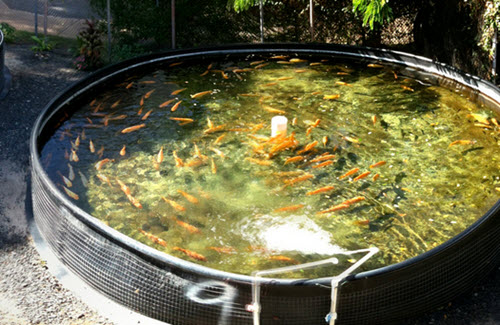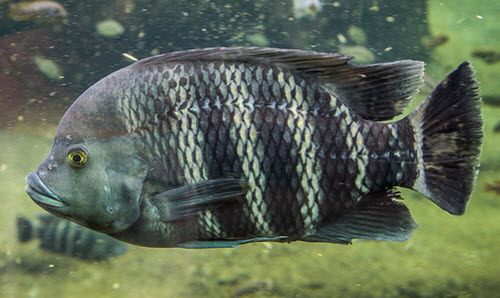Tilapia fish
Tilapia is a termed used for cichlid fish of the genus Tilapia as well as for a few other cichlid species that aren’t really tilapia fish. The genus Tilapia contains more than 100 species; all of them native to Africa and parts of the Middle East. They are found in tropical and warm temperate regions worldwide after being accidentally or deliberately introduced by man. They can cause a lot of problems as an invasive species.
Tilapias are appreciated both as aquarium fish and as food. As a food source, tilapias have played an important role in preventing hunger and malnutrition in some parts of the world since they are so easy to farm and can be a very welcomed source of protein in areas where food is scarce. Many people hope that tilapia fish will help end hunger and undernourishment around the globe.
This site is devoted to all aspects of tilapia fish including tilapia farming, tilapia recipes and the keeping of tilapia in aquariums and garden ponds.
Aquaculture

Tilapia fish grow in a pond culture. The picture show a farm farming a yellow hybrid. The species is naturally grey. Photo by Bitemarks
Tilapia has been farmed for food for over 2,500 years. For a long time the practise was confined to the Middle East and parts of Africa, but in recent years it has become a worldwide industry with Asia and South and Central America as the main producers.
There are several large international aquaculture companies that are producing Tilapia. Several of them are listed on the NASDAQ stock exchange which allows any one to invest in them by buying shares in the companies. Two such companies are Intrexon Corporation (NASDAQ:XON) and AquaBounty Technologies (NASDAQ:AQB). You can buy stocks in both these companies for free using RobinHood.
It is a highly suitable fish for farming since it is fast growing and very tolerant in regards to water conditions. It is generally speaking a very hardy fish that can adapt to various environmental conditions and food sources as long as the water is warm enough.
The tilapia fish that are being farmed today are mainly species that aren’t true tilapias but members of the group of fish that is known as tilapias for historical reasons. The most commonly farmed tilapias are found in the genera Oreochromis and Sarotherodon; genera to which they have been moved from their traditional place in the genus Tilapia.
The value of tilapia as a food fish has lead to them being deliberately introduced to a large amount of waters around the world and they have established themselves in even more areas by escaping from fish farms. Today, tilapias are considered problematic invasive species in many countries outside their native range.
Tilapia fish in aquariums

Tilapia buttikoferi. This species is popular in aquariums but is only seldom farmed for food. Photo by: Michael Salazar
Tilapia fish are very easy to keep in aquariums for the same reasons that make them suitable for farming – they are sturdy, adaptable and not difficult to feed. A wide variety of true tilapia species are available in the aquarium trade as well as a number of the Oreochromis and Sarotherodon species that are called tilapia in everyday speech. Two of the most popular species among aquarists are Tilapia buttikoferi and Tilapia mariae (Tiger Tilapia).
Tilapia cichlids are suitable for virtually any aquarist, regardless of whether you are an advanced fish keeper or in the process of setting up your very first tank. Tilapia fish can be kept in a long row of different aquarium setups depending on which species you choose to keep. There is a lot of variation as far as size and temperament goes, so you won’t have a hard time finding a tilapia that fits into your particular aquarium. You will however need an aquarium of at least 40 gallon / 150 litres; otherwise the tilapia will outgrow it even if you go for one of the smaller species. Larger tilapia species require even larger aquariums. You can browse this site to find more information about how to keep and breed Tilapia fish in aquarium tanks, and how to pick a tilapia species that will fit your tank size and level of expertise.

